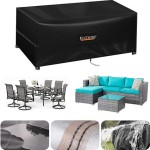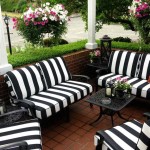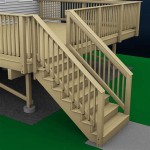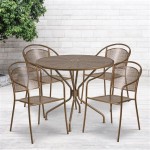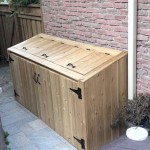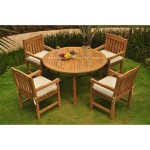Types of Outdoor Light Fixtures
Outdoor lighting plays a crucial role in enhancing the aesthetics, safety, and functionality of a property. Selecting the appropriate outdoor light fixtures requires careful consideration of various factors, including architectural style, intended use, and environmental conditions. This article explores a range of outdoor light fixtures, detailing their characteristics, applications, and benefits.
Wall Lights: Illuminating Pathways and Entryways
Wall lights, also known as sconces, are mounted directly onto exterior walls, providing both ambient and task lighting. They are commonly used to illuminate entryways, pathways, patios, and garages. The design of wall lights varies widely, ranging from traditional lanterns to modern, minimalist styles. Material choices include durable options like cast aluminum, stainless steel, and copper, ensuring resistance to weather elements. Proper installation height is vital; typically, wall lights are installed approximately six feet above ground level to provide adequate illumination without creating glare.
One popular type of wall light is the "up-and-down" light, which projects beams both upwards and downwards, creating a dramatic visual effect on the wall. These fixtures are effective for highlighting architectural details and adding visual interest to otherwise plain surfaces. Another common style is the shielded wall light, which directs light downwards, minimizing light pollution and providing focused illumination for pathways and steps. Motion-sensor wall lights offer an added layer of security by automatically illuminating when movement is detected.
When selecting wall lights, it is essential to consider the light output, measured in lumens, to ensure sufficient brightness for the intended area. The color temperature, measured in Kelvin, also affects the ambiance; warmer temperatures (2700K-3000K) create a cozy, inviting atmosphere, while cooler temperatures (4000K-5000K) offer brighter, more focused illumination.
Post Lights: Defining Boundaries and Enhancing Curb Appeal
Post lights are mounted atop posts or pillars, offering a combination of functional illumination and decorative appeal. They are commonly used to define property boundaries, illuminate driveways, and enhance landscaping features. Post lights can be integrated into existing fences or installed as standalone fixtures. The height of the post is a significant factor; taller posts provide broader illumination, while shorter posts offer more focused lighting.
Designs for post lights range from traditional Victorian styles, featuring ornate detailing and glass enclosures, to contemporary designs with clean lines and minimalist aesthetics. Common materials include cast iron, aluminum, and weather-resistant polymers. Many post lights are equipped with photocells, which automatically turn the light on at dusk and off at dawn, ensuring energy efficiency and convenience.
Solar-powered post lights are a sustainable option, utilizing solar panels to charge batteries during the day and providing illumination at night. These fixtures are particularly suitable for locations where wiring is difficult or costly to install. When choosing post lights, it's important to consider the diameter of the post to ensure a secure fit. The light distribution pattern should also be evaluated to ensure adequate coverage of the surrounding area. Some post lights offer adjustable brightness settings, allowing users to customize the illumination level to suit their needs.
Flood Lights: Providing Security and Broad Illumination
Flood lights are designed to provide a wide beam of intense light, ideal for security, task lighting, and highlighting large areas. They are commonly used to illuminate driveways, backyards, parking lots, and commercial properties. Flood lights are typically mounted on walls, eaves, or poles, and can be adjusted to direct the light in the desired direction.
LED flood lights are increasingly popular due to their energy efficiency, long lifespan, and high light output. They consume significantly less energy than traditional halogen or incandescent flood lights, resulting in lower electricity bills. Motion-sensor flood lights are a highly effective security measure, automatically activating when movement is detected within a specified range. This deters potential intruders and provides added peace of mind. Dusk-to-dawn flood lights offer continuous illumination throughout the night, ensuring enhanced visibility and safety.
The beam angle of a flood light determines the width of the illuminated area. A wider beam angle is suitable for illuminating large areas, while a narrower beam angle provides more focused illumination. When selecting flood lights, it is crucial to consider the IP (Ingress Protection) rating, which indicates the fixture's resistance to water and dust. A higher IP rating signifies greater protection against the elements. The lumen output is also a key factor; higher lumen values provide brighter illumination.
Spotlights: Highlighting Specific Features
Spotlights are designed to focus a narrow, intense beam of light on a specific area or object. They are commonly used to highlight architectural details, landscaping features, or signage. Spotlights are typically adjustable, allowing users to direct the light beam precisely where it is needed. They can be mounted on walls, ground stakes, or trees, depending on the desired effect.
LED spotlights offer numerous advantages over traditional halogen spotlights, including lower energy consumption, longer lifespan, and cooler operating temperatures. Color-changing spotlights allow users to create dynamic lighting effects, adding visual interest to outdoor spaces. These fixtures typically offer a wide range of colors and lighting modes, which can be controlled via a remote or mobile app.
When selecting spotlights, it is essential to consider the beam angle, lumen output, and color temperature. A narrower beam angle is ideal for highlighting small objects, while a wider beam angle is suitable for illuminating larger features. The color temperature affects the mood and ambiance of the lighting; warmer temperatures create a soft, inviting glow, while cooler temperatures provide brighter, more focused illumination.
Landscape Lighting: Enhancing Outdoor Aesthetics
Landscape lighting encompasses a variety of fixtures designed to enhance the beauty and functionality of outdoor spaces. Typical landscape lighting includes path lights, spotlights, well lights, and deck lights. The goal of landscape lighting is to create a visually appealing and safe environment, highlighting key features and providing adequate illumination for pathways and outdoor living areas.
Path lights are designed to illuminate walkways and garden paths, providing safety and guiding visitors through the landscape. They are typically low to the ground, directing light downwards to avoid glare. Spotlights can be used to highlight trees, shrubs, and architectural elements, adding depth and dimension to the landscape. Well lights are recessed into the ground, providing upward-facing illumination without obstructing views. Deck lights are integrated into decks and patios, providing ambient lighting for outdoor entertaining.
When planning a landscape lighting system, it is important to consider the overall design and desired effect. A layered approach, combining different types of fixtures and lighting techniques, can create a more dynamic and visually appealing result. Low-voltage landscape lighting systems are a popular choice due to their safety, energy efficiency, and ease of installation. These systems typically operate on 12 volts, reducing the risk of electric shock and allowing for easier wiring and maintenance.
String Lights: Creating a Festive Ambiance
String lights, also known as fairy lights or bistro lights, are a versatile and decorative lighting option that creates a festive and inviting ambiance. They consist of a series of small light bulbs strung along a flexible wire or cord. String lights are commonly used to decorate patios, decks, gardens, and outdoor events.
LED string lights are a popular choice due to their energy efficiency and long lifespan. They consume significantly less energy than traditional incandescent string lights, resulting in lower electricity bills. Solar-powered string lights offer a sustainable and convenient option, eliminating the need for electrical outlets. These fixtures are ideal for decorating areas where access to power is limited.
When selecting string lights, it is important to consider the bulb type, spacing, and length of the string. LED bulbs are durable and energy-efficient, while incandescent bulbs provide a warmer, more traditional glow. The spacing between bulbs affects the overall brightness and density of the lighting. The length of the string should be sufficient to cover the desired area. String lights can be hung in a variety of ways, including draping them from trees, wrapping them around railings, or suspending them from hooks or clips.
Underwater Lights: Enhancing Water Features
Underwater lights are specifically designed for use in ponds, fountains, swimming pools, and other water features. They add a dramatic and visually appealing element to these aquatic environments, enhancing their beauty and creating a captivating ambiance. Underwater lights are typically submersible and designed to withstand the corrosive effects of water and chemicals.
LED underwater lights are a popular choice due to their energy efficiency, long lifespan, and vibrant colors. They consume significantly less energy than traditional halogen underwater lights, resulting in lower electricity bills. Color-changing underwater lights allow users to create dynamic lighting effects, transforming the appearance of the water feature. These fixtures typically offer a wide range of colors and patterns, which can be controlled via a remote or mobile app.
When selecting underwater lights, it is crucial to consider the IP rating, which indicates the fixture's resistance to water. A higher IP rating signifies greater protection against water damage. The voltage of the lighting system is also an important factor; low-voltage systems are generally safer and easier to install. Proper installation and maintenance are essential to ensure the longevity and safety of underwater lights.

5 Outdoor Lighting Styles And Ideas Design Inspirations Lightsonline Com Blog

Everything You Need To Know About Landscape Lighting

Landscape Lighting Designer Outdoor Shockyelectric

Light Guide Outdoor Lighting Fundamentals

8 Types Of Outdoor Lighting For Commercial Buildings

Reduce Light Pollution With Better Outdoor Lighting 5 Principles

Outdoor Lighting Types Light Guide Lamps Plus Youtube Post Lights Wall Fixtures

Outdoor Residential Lighting Dte Energy

What Light Fittings Should We Install Outdoors When It Rains
Outdoor Lighting Fixtures Classifications Electrical Knowhow


